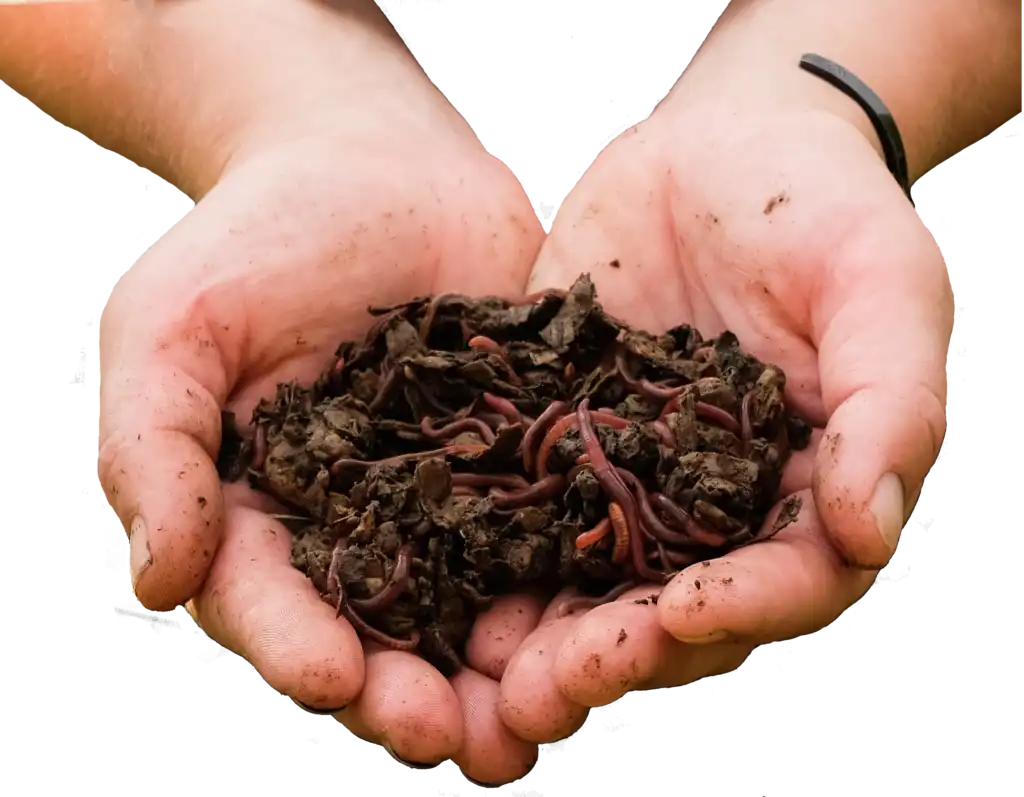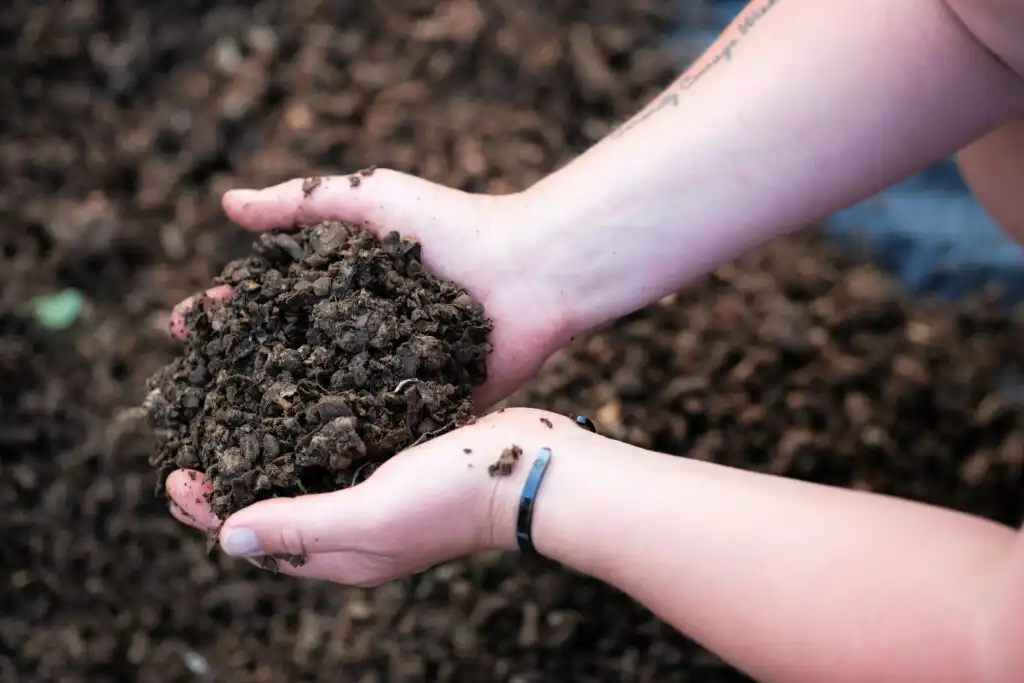The what, why and how of using vermicompost to help your garden, houseplants And Yard thrive
For those of us who have taken an interest in plants growing, in a garden, in a house, in a crack in the pavement; you, too, may have found yourself on a mission to help your plant babies thrive indoors and out, for esthetics, fresher air, delicious food or just clean fun! The key to healthy plants is healthy soil. One way to promote soil health is to add worm castings or vermicompost, sometimes called black gold. Here is a good overview of what worm castings are; how and why to use them; and how to get your own worm castings.
What are worm castings?
Worms (Red Wigglers, most commonly) are used as a means of composting rich organic materials (like food waste) in a process called vermicomposting. Worms can be used to aid composting mostly because it speeds up the process. But they also co-exist with a robust and beneficial microbial and fungal community. Vermicompost is the finished product from the vermicomposting process. Within finished vermicompost, you will find worm castings… worm poop! When folks talk about pure worm castings, they probably haven’t collected an isolated stool sample from a worm, and are more likely referring to the whole output of a vermiculture system, vermicompost, which will largely consist of worm castings.

Benefits of using vermicompost or worm castings
Worm castings, like other critter manures, are an excellent addition to soil. Unlike other manures, they don’t smell strongly (they have a rich earthy scent). Vermicompost is a valuable addition to your garden because it improves seed germination and plant growth and development. The benefits of using worm castings or vermicompost include:
- adding slow release, plant-available nutrients
- provides nitrogen, phosphorus and potassium (NPK), macronutrients required by all plants
- includes a compliment of micronutrients not found in most synthetic fertilizers
- adding soil organic matter
- improves moisture retention
- improves porosity, texture and tilth (makes it fluffy and less compact(able))
- allows soil to better store and release essential nutrients
- improving ability of soil to buffer against changes in pH
- introduce beneficial microbes and fungi to soil, helping the ‘good guys’ out compete plant diseases and pests
In short, vermicompost is a complete fertilizer that promotes soil and plant health in more ways that providing immediate nutrients. Adding vermicompost to soil supports soil’s ability to cycle and function. Long term use of synthetic fertilizer damages soil microflora and vermicompost helps to restore natural balance.
Another major benefit of using vermicompost in your garden is that you can make it yourself – out of your garbage! If you’re looking for a big haul of vermicompost, you’re probably looking to buy it. One of the disadvantages can be price and/or availably. The good news here is that adding vermicompost and caring for your soil as a living system will minimize additions required in the future.

How to use vermicompost
There is no wrong time to add vermicompost to soil. Frequent application is worthwhile. However, the best bang for your buck is to mix vermicompost with soil at time of seeding or transplanting. Remember, you’re adding a live product. You want to keep it alive by avoiding drying. Ideally, vermicompost is placed under the soil surface, away from sunlight and major changes in moisture, when roots will directly interact with the vermicompost.
When applying vermicompost to growing plants, rake it into soil as best as possible. Water thoroughly to move whatever possible into the soil. Bonus points for covering with mulch. The best bet to recieve the benefit of vermicompost for growing plants is to use a vermicompost tea. (There will be more posts about vermicompost tea for sure! I’m finding this to be a great tool in applying vermicompost)
How much to apply
It’s hard to apply too much vermicompost. It can’t burn plants in the same way that synthetic fertilizers can. The short (and frustrating) answer is: some is good, more is better. Additions as low as 5% or 1 part vermicompost: 20 parts soil are known to improve plant growth and health. But a good rule of thumb is about 10-20% vermicompost is a generous amount. This is a bit less then 1 part vermicompost : 3 parts soil.
Where do I get this magic?
Anyone can vermicompost. It’s fun and relatively simple. It’s easily done inside, making it accessible for folks in apartments and the like to share in environmental initiatives with kids.
For larger projects, you may be looking to buy vermicompost or worm castings. If you’re buying vermciompost, keep in mind that it’s alive. Look for vermicompost that is handled and stored like it’s a living product. Vermciompost that has sat dry in a sealed bag on a big box store shelf is not equivalent to vermicompost scooped out of a fresh compost bin. Big box vermicompost is better than nothing, to be sure, but will likely not contain the same microflora, in particular. The best worm castings come right out of a compost pile or bin – your own or a local vermicomposter. It’s worthwhile (and interesting) to inquire about the knowledge that has gone into the processes and handling behind vermicompost that you’re buying. Search worm castings near me or vermicompost near me to find something local to you. This has an added benefit of supporting local small business.
If you’re in Kitchener-Waterloo area of Ontario, Canada. You’re in luck! I can provide help with getting started with your own composting adventure and vermicompost and vermicompost tea.
